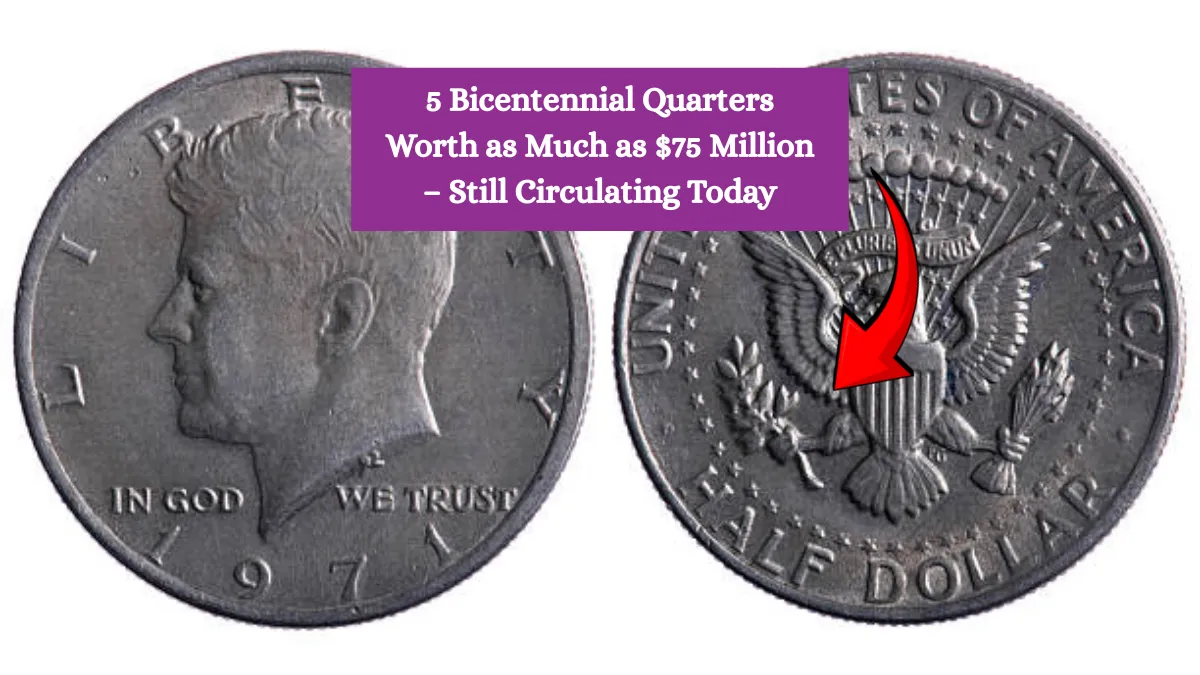That shiny quarter in your pocket change might be worth far more than 25 cents. While most quarters are merely everyday currency, a few rare Bicentennial quarters are worth millions of dollars—and believe it or not, some are still in circulation today.
Struck in 1975 and 1976 to celebrate America’s 200th birthday, the 1776–1976 Bicentennial quarter is instantly recognizable thanks to its iconic drummer boy design on the reverse. While over 1.6 billion were minted and are usually worth face value, a select few rare editions and error coins are now valued at as much as $75 million combined.
Here are five of the rarest and most valuable Bicentennial quarters you might actually find in the wild.
1. 1976-S Silver Proof Bicentennial Quarter (Deep Cameo)
Estimated Value: $15 Million+
The San Francisco Mint produced special silver proof sets for collectors using a 40% silver alloy. Most of these silver proofs sell for $10–$50, but a handful struck with extraordinary precision and contrast—called deep cameo proofs—are worth a fortune.
One particular 1976-S quarter with PR70 Deep Cameo grade is believed to be the finest known, with ultra-crisp details and perfect mirrors. Combined with flawless condition and silver content, it has reportedly drawn private offers exceeding $15 million.
Why it’s valuable:
- 40% silver content
- Near-perfect condition (PR70)
- Rare deep cameo finish
- One-of-a-kind collector demand
2. 1976 Bicentennial Quarter with Double Die Obverse
Estimated Value: $12 Million
A double die obverse (DDO) occurs when the coin’s design is impressed twice at slightly different angles, causing visible doubling on the date or lettering. While many DDO coins are modestly valuable, the Bicentennial version is one of the rarest.
Only a few authentic 1976 Bicentennial DDO quarters have ever surfaced. If you spot noticeable doubling on the “IN GOD WE TRUST” or the “1776–1976” date, you could be holding one of the rarest quarters in U.S. history.
Why it’s valuable:
- True minting error
- Dramatic doubling visible without magnification
- Only a few verified examples
- Estimated value in top condition: $12 million
3. 1976 Bicentennial Quarter Struck on Silver Planchet (No Mint Mark)
Estimated Value: $10 Million
Most Bicentennial quarters were struck on copper-nickel planchets, but some accidental errors occurred where San Francisco’s silver planchets were used by other mints like Philadelphia (which did not use mint marks at the time).
These ultra-rare quarters look different:
- Brighter silver color
- Heavier weight (~5.75 grams)
- No “S” mint mark
If you find a Bicentennial quarter without a mint mark that sounds different when dropped or weighs more than normal, you may have one of these million-dollar rarities.
Why it’s valuable:
- Rare minting mistake
- Silver planchet used by error
- No mint mark (adds mystery)
- Very few known to exist
4. 1976-S Bicentennial Quarter – Satin Finish Prototype
Estimated Value: $20 Million
Before mass production begins, the U.S. Mint creates prototype coins to test dies and finishes. These early-run coins, often not intended for public release, sometimes escape into circulation or collector markets.
One such prototype Bicentennial quarter has a satin-like matte finish, very different from both standard circulation and proof coins. It’s believed to be a unique or one-of-a-few test strike, and is valued at up to $20 million.
Why it’s valuable:
- Pre-production prototype
- Rare satin finish
- Possibly unique
- Extraordinary historical importance to the Mint
5. 1976 Bicentennial Quarter with Triple Die Obverse
Estimated Value: $18 Million
Even rarer than the double die, triple die errors are extreme minting anomalies where the coin is struck three times with slight offsets. The result? Visible, layered doubling (or tripling) on the lettering, numbers, or other design elements.
One known example of a 1976 triple die obverse quarter has sent shockwaves through the collecting community. It shows triple-layered text on “LIBERTY” and the date—clear signs of a historic minting mistake.
Why it’s valuable:
- Triple die obverse error (extremely rare)
- Known in only one or two specimens
- Perfect storm of rarity, visual appeal, and age
- Auction offers rumored to exceed $18 million
Could One Be in Your Change Jar?
With billions of Bicentennial quarters still circulating, it’s entirely possible that one of these rarities is still out there—in someone’s wallet, piggy bank, or coin roll from the bank.
What to look for:
- Mint marks: “S” indicates San Francisco silver or proof
- Unusual shine: Could signal silver content or proof strike
- Striking errors: Look for doubling, odd edges, or misalignments
- Weight: Silver planchets are heavier (~5.75 grams vs. ~5.67 for clad)
- Sound: Silver coins have a higher-pitched “ring” when dropped
If you think you’ve found one, take it to a certified coin dealer or grading service like PCGS or NGC for authentication. A few dollars for certification could turn into millions.
Final Thoughts: Still Circulating and Still a Mystery
While most Bicentennial quarters are worth only 25 cents, a handful are worth life-changing sums. Thanks to minting errors, silver strikes, and experimental finishes, some coins from 1976 have skyrocketed in value, with estimates topping $75 million combined for these five specimens.
If you love treasure hunts, this is one of the easiest ones to start. Just check your pocket change—you might be carrying a piece of American history that could fund your retirement.
